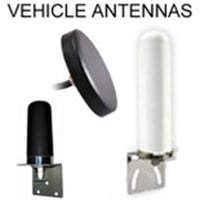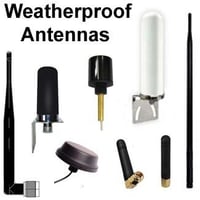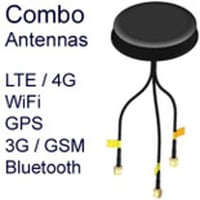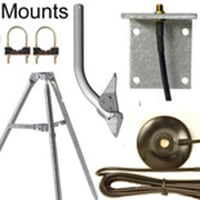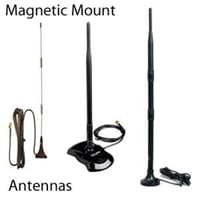Bluetooth Antennas
Bluetooth Antennas
Bluetooth is a wireless communication technology used for exchanging data across short distances. Bluetooth antennas are designed for use on devices running at 2.4GHz. sizes range from miniature to sub-miniature connections, using RP-SMA, SMA and U.FL connectors. Cable sizes and types vary depending on the connector used. Most Bluetooth antennas are omnidirectional, but small directional antennas of 2.4GHz are options for Bluetooth. Mounting options include through-hole, surface mounts, wall and pole mounts.
- Bluetooth devices use the 2.4 to 2.485 GHz band of frequencies.
- Our Bluetooth antennas are also ZigBee Antennas, because ZigBee uses the same frequency band: 2.400 to 2.484GHz.
- Bluetooth is the most popular wireless technology for IoT (Internet of Things).
- ZigBee is very similar to Bluetooth, but simpler and lower-cost to operate
- LoRa is the long-range wireless alternative to Bluetooth and ZigBee for IoT applications.
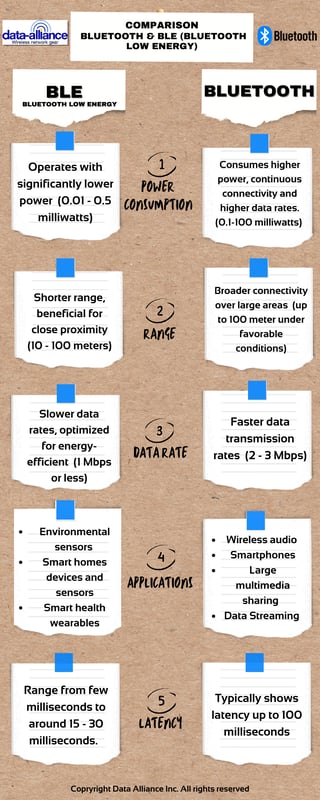
We carry a number of weatherproofed Bluetooth antennas for outdoor use.
Small devices such as cell phones cannot be fitted with an external Bluetooth antenna.
Devices that can accommodate an external Bluetooth antenna.
Devices that can accommodate an external Bluetooth antenna usually do so to boost the Bluetooth signal, range, and performance. Not all devices come with this feature, but several types of devices could potentially be designed to work with an external Bluetooth antenna:
-
Bluetooth Adapters/Dongles for PCs: Many USB Bluetooth adapters for computers can potentially accommodate external antennas, especially ones designed for desktop PCs.
-
Wireless Routers with Bluetooth Functionality: Some wireless routers or access points, especially those designed for enterprise applications, come with multiple antennas and might have support for Bluetooth as well. These devices can have replaceable antennas.
-
Development Boards: Boards like Raspberry Pi, with certain Bluetooth modules, can be configured to use external antennas, provided you have some level of expertise in electronics.
-
Some IoT Devices: IoT (Internet of Things) devices, especially those requiring long-range Bluetooth communication, can be designed with external antenna ports.
-
Two-Way Radios: Some modern two-way radios have Bluetooth capabilities and an external antenna.
-
Specialty Bluetooth Repeaters/Extenders: These are designed specifically to boost and extend Bluetooth signal range and might come with ports for external antennas.
-
Car Audio Systems: Some aftermarket car audio systems with Bluetooth might be designed to accommodate an external Bluetooth antenna for better reception, especially if the internal one is not providing adequate coverage.
-
Industrial Devices: Industrial tablets, computers, and other devices might feature stronger, replaceable Bluetooth antennas to ensure connectivity in challenging environments.
If you're considering adding an external antenna to a device, keep in mind the following:
- Compatibility: Ensure that the antenna is designed to work with the specific Bluetooth frequency (2.4 GHz).
- Legal Considerations: In some jurisdictions, boosting your device's signal strength beyond certain limits can be illegal. Always check local regulations.
- Technical Expertise: Making modifications, especially to consumer electronics, can void warranties and potentially damage the device if not done correctly.
- Antenna Cables and Connectors: Bluetooth antennas typically connect to an internal module using one of the following types of antenna cable:
- U.FL cable to connect to a U.FL or IPEX connector on the module or Printed Circuit Board. If your antenna of choice has an RP-SMA connector (or cable to an RP-SMA connector): Typically, you will use a U.FL to RP-SMA cable to connect to the Bluetooth module.
- MHF4 cable to connect to a MHF4 connector on the module or Printed Circuit Board. If your antenna of choice has an RP-SMA connector (or cable to an RP-SMA connector): Typically, you will use a MHF4 to RP-SMA cable to connect to the Bluetooth module.
- To connect your antenna to an RP-SMA female connector on a Bluetooth device: You will use an RP-SMA extension cable.
When purchasing a device, it's a good idea to check the device specifications, user manual, or contact the manufacturer to confirm external antenna compatibility.
Different Bluetooth devices have different antenna compatibility. Matching the right antenna to the right device is done by checking connector compatibility and frequency rating. Range and gain are variables depending on antenna’s brand. Connector adapters can also be used where the device and antenna have different connectors.
Since its invention by Ericson in 1994, Bluetooth has been a replacement for short-range wired communication. Transceivers are designed to run on low power and are produced at a low cost. This makes fitting an antenna onto some Bluetooth devices necessary to increase range and reduce noise.

